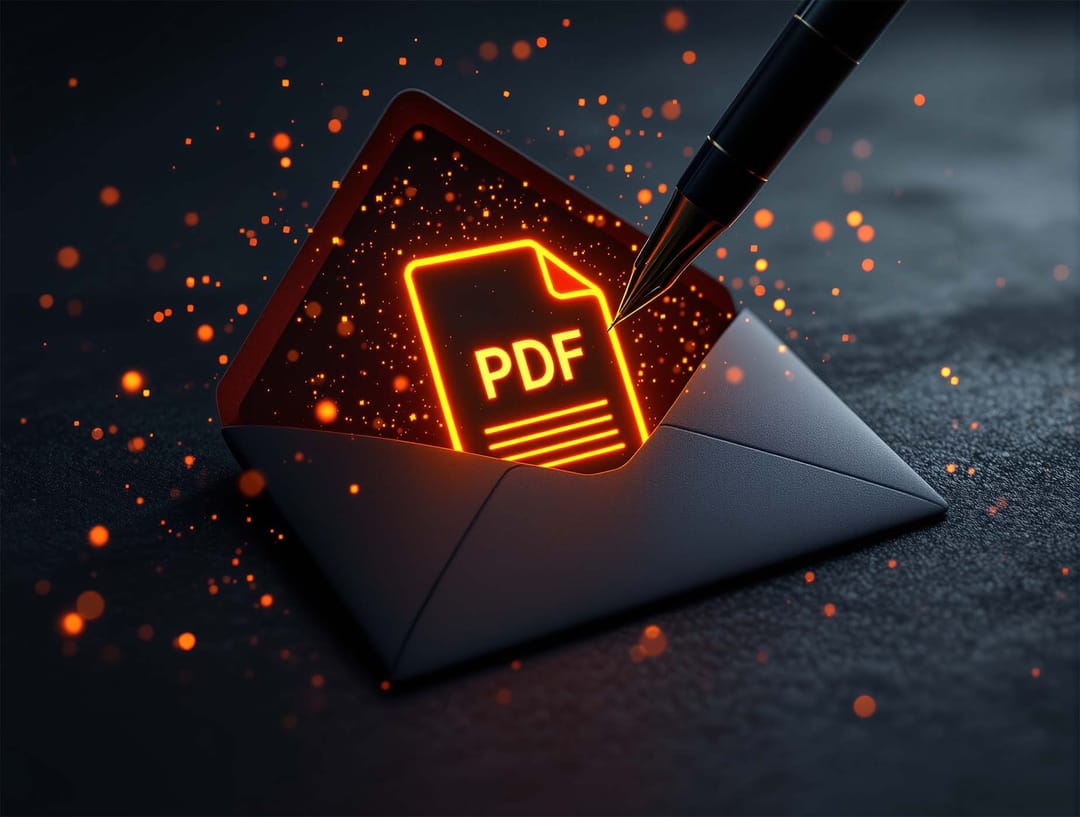Understanding PDF Phishing Scams
PDF phishing scams are deceptive attempts by malicious actors to trick individuals into sharing sensitive information or downloading malware through PDF files. These lures typically impersonate trusted senders and contain embedded links, buttons, or forms that prompt recipients to “verify” details, log in, or download content. While these files appear harmless, they can conceal malicious scripts or links that compromise security once opened. To reduce exposure, verify the sender’s identity, avoid clicking suspicious links or attachments from unknown sources, and maintain updated security software to detect and block threats.
Why PDFs Are a Prime Target for Cybercriminals
PDFs are ubiquitous across business and personal communications, making them an ideal vector for attackers. The format’s flexibility allows cybercriminals to embed links, scripts, and even executable content, increasing the effectiveness of social engineering. Because PDFs can sometimes slip past basic email security checks, attackers exploit this loophole to deliver payloads or harvest credentials. Combined with realistic branding and urgent messaging, PDF phishing often achieves higher success rates than plain-text email scams.
Common Types of PDF Phishing Scams
1. Email-Based PDF Phishing
Attackers impersonate legitimate organizations and send convincing emails with PDF attachments that contain malicious links or malware. Logos, color schemes, and professional formatting are used to build trust. Always verify the sender and avoid opening attachments or links unless you’re certain they are safe. Keep antivirus tools updated and stay informed on evolving tactics.
2. Web-Based PDF Phishing
These scams begin with an email or website that encourages users to download a PDF. Once opened, hidden links or embedded scripts redirect to a fake login page or malicious site. Protect yourself by validating the authenticity of emails and websites before clicking any links and by ensuring your devices run up-to-date security software.
3. File Sharing and Phishing
A message or email appears to share a document via a trusted platform. The attached or linked PDF urges you to “access,” “view,” or “request” the file, but actually routes you to phishing pages or malware. Verify unexpected sharing notices—even from known contacts—before engaging, and rely on current antivirus protections to flag malicious attempts.
4. Fake CAPTCHA Redirects
A PDF presents what looks like a CAPTCHA verification. Clicking the CAPTCHA redirects you to a malicious site or data-harvesting form. Treat unexpected CAPTCHA prompts inside PDFs as red flags and verify the source before interacting with any embedded content.
5. Play Buttons on Static Images
Scammers overlay a play button on a static image inside the PDF to simulate a video. Clicking it redirects to a malicious website or triggers a malware download. Be skeptical of “play” overlays in PDFs and confirm the legitimacy of any interactive elements before clicking.
Practical Prevention Tips Against PDF Phishing
- Verify senders before engaging: Cross-check email addresses, domains, and context. If in doubt, confirm through a known channel.
- Don’t click impulsively: Hover over links (where applicable) to preview URLs and avoid attachments from unfamiliar or unexpected sources.
- Keep security tools current: Updated antivirus and endpoint protection improve detection of malicious files and links.
- Maintain a cautious mindset: Treat urgent requests for credentials or payment updates with skepticism—especially when delivered via PDF.
Reduce Risk with Expert Support
If you’re concerned about rising PDF phishing threats, take proactive steps to harden your defenses. Our IT Support Provider in Miami can help you prevent potential PDF phishing attacks with practical controls and end-user awareness training. You can also visit our Managed IT Services Company in Columbus to reduce the risk of falling victim to these deceitful PDF phishing scams and strengthen your organization’s overall security posture.
FAQs
What is the biggest red flag in a PDF phishing email?
Unexpected attachments from unfamiliar senders, urgent requests for action (like “verify now”), and PDFs prompting you to click embedded buttons or links are major red flags. Always verify the sender and context before opening.
Can a PDF install malware just by opening it?
PDFs can contain hidden links or scripts that lead you to malicious sites or trigger downloads. While not every PDF can execute malware on open, interacting with embedded content can compromise your device or credentials.
What’s the simplest way to avoid PDF phishing?
Adopt a “trust but verify” habit: confirm the sender via a separate channel, avoid clicking embedded links in PDFs, and keep your security software updated. If a document is unexpected, validate it before opening.

